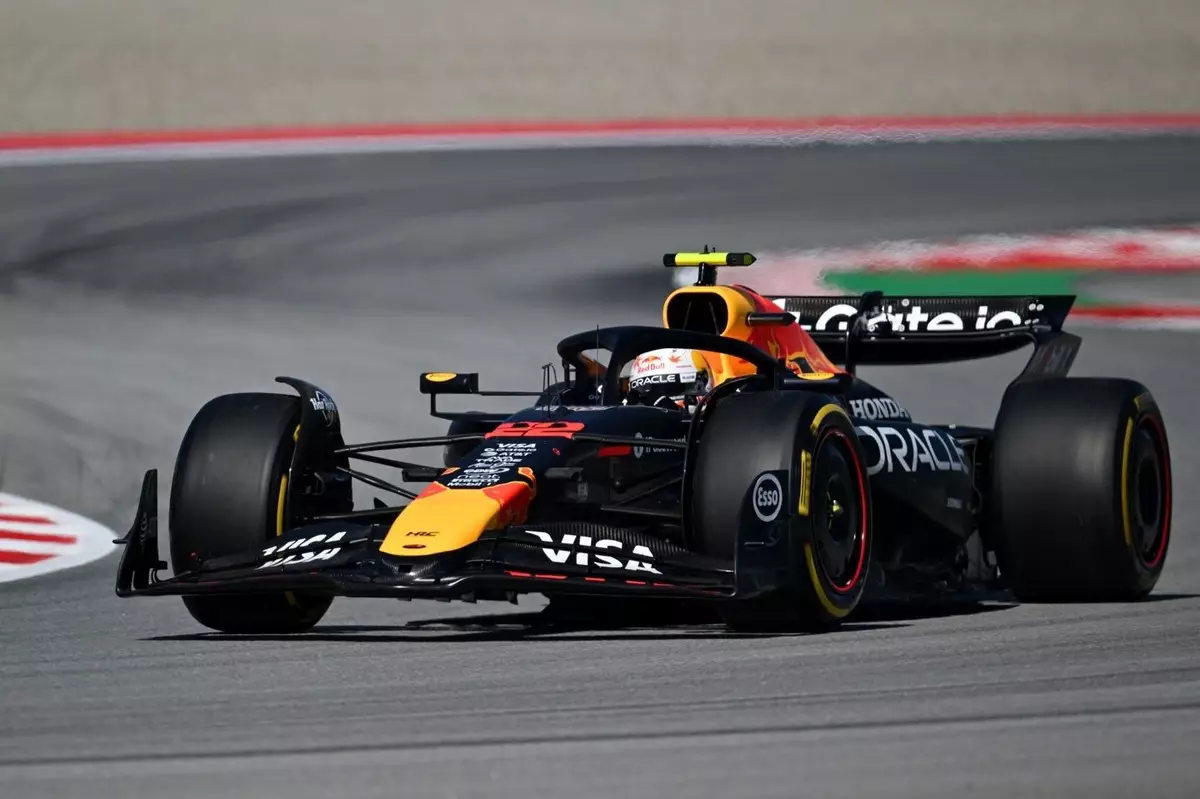As the lights dimmed over Barcelona, the air was ripe with anticipation. Formula 1 drivers live for those fleeting moments on the razor-thin edge of speed, where every millisecond counts. Among them stands Yuki Tsunoda, the Red Bull driver grappling with an unexpected puzzle during the opening practice sessions of the Spanish Grand Prix. Revealing that he was “befuddled” by his lack of pace, Tsunoda’s introspective comments penned a vivid picture of a racing mind caught in the crosshairs of expectation and reality.
In a sport where precision and speed are paramount, Tsunoda’s confusion raises compelling questions. How do you reconcile the feeling of a “smooth” drive with an actual performance that leaves you six tenths of a second adrift from your teammate, the formidable Max Verstappen? In competitive racing, where team dynamics play a pivotal role, Tsunoda’s self-doubt could not only undermine his confidence but also affect the team’s strategic momentum.
The Weight of Expectation
Part of the fascination with Tsunoda’s statement comes from the weight of the expectations placed upon him. As a young driver, the spotlight emanating from the Red Bull garage is not only bright but sometimes blinding. In essence, the challenge goes beyond just understanding mechanical limitations; it dives deep into psychological space. The disparity in performance can chip away at a driver’s mental fortitude, giving rise to an incessant race against oneself, even before the competition begins.
Tsunoda’s reflections on his apparent slide during the sessions underscore the vital importance of mental clarity in motorsport. The difference between a driver who merely participates and one who competes ferociously for every inch of track can often boil down to their mental state. A fragmented mindset can lead to more than just lost speed; it can spiral into a cacophony of confusion, self-doubt, and wasted potential.
Technical Troubles: Analyzing the Data
Delving into the technical aspects, Tsunoda mentioned a notable struggle with grip, especially in sectors marked by tight corners like Turns 9 and 10. This centrifugal challenge could be a composite of configuration choices and tire management—or even the infamous “teething” problems often encountered by drivers acclimating to their cars. With GPS data pointing to a significant shortfall in carrying speed, the engineers might want to take a closer look at their setup.
It’s here where Tsunoda’s experience underlines a crucial element of F1: collaboration. Finding the right balance within the car involves not only technical prowess but also a symbiotic relationship between driver and engineer. As he expressed the hope that the individuals behind the scenes could yield insights and solutions, it emphasizes how vital communication is. For Tsunoda, a mere improvement in tire mechanics or aerodynamic adjustments might return those precious tenths to his time sheets.
A Figure in Contrast: Verstappen’s Perspective
In stark contrast stands Verstappen’s perspective—one that was tinged with optimism this particular Friday. The Dutchman, who is no stranger to the intoxicating pressure of high stakes, noted that although he hadn’t yet cracked the code to maximum performance, there was a palpable lift in his spirits. The mention of “feeling happier” speaks volumes about his adaptability and experience; it showcases an understanding that racing is often a marathon, not a sprint.
Verstappen’s reflections draw attention to an essential tenet of F1: progression is often fraught with ups and downs, and finding a rhythm with the vehicle can be almost as pivotal as hitting the throttle at the right moment. As the temperatures rise on the track, consumers should not overlook that even a champion like Verstappen still seeks a more profound connection between himself and his car. This quest illustrates the relentless human pursuit of excellence—the very essence of motorsport.
Facing the Challenges Ahead
As the night approaches, Tsunoda faces a tough reality. The ‘longer night’ he anticipates isn’t just a metaphorical one. In Formula 1, time is the most precious commodity. Every second gained could be the difference between winning and losing. Now, not only must he adapt to the car’s quirks but also hustle against the clock to devise solutions.
The looming curfew adds another layer of pressure; for Tsunoda and the engineers, this is not merely a tightrope walk but rather a sprint to ensure that no opportunity is wasted. Facing the challenges ahead demands a collaborative spirit woven with determination—qualities essential for any driver contending with their own limitations. Each session on the track becomes an echo—a call to rise, rebound, and reclaim the speed that has so tantalizingly eluded him.


Leave a Reply